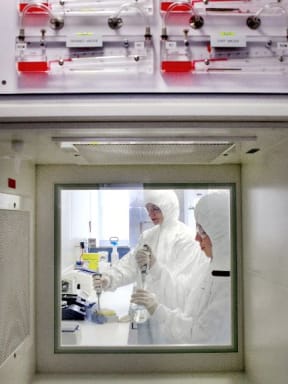The head of a new high-tech disease containment laboratory at Otago University says workplaces have been slow to embrace the technology.
Otago University's new Physical Containment Level 3 (PC3) microbiology lab is a converted shipping container, bought for less than $1 million, shipped from France and placed on the roof of the Microbiology building using a crane.

Researchers can work with live TB bacteria. Photo: SUPPLIED
The facility, the eighth in the country, is full of filtration systems, sterilisation showers and air-locking security doors.
Laboratory head Professor Greg Cook says for the first time his research team will be able to work with live tuberculosis bacteria and try to understand at a molecular level how a new drug, bedaquiline, actually kills the disease.
He says having the facility will mean the work will be taken more seriously and will give young scientists a better career start.
Professor Cook says such labs have become common overseas, but New Zealand has been slow to adopt them.
However, the coordinator of a new PC3 lab at the Canterbury District Health Board, Jo Mitchell, says some are springing up in response to swine flu scares and a push for safer workplaces.
About 300 to 400 cases of human TB are diagnosed in New Zealand each year and it kills about 1.5 million people worldwide.
The highest laboratory level, PC4, is used for non-treatable diseases like Africa's Ebola virus.
So far, the only PC4 lab in Australasia is in Geelong near Melbourne, but the Ministry for Primary Industries says talks have begun about New Zealand getting one.

